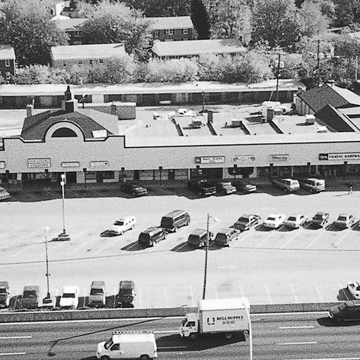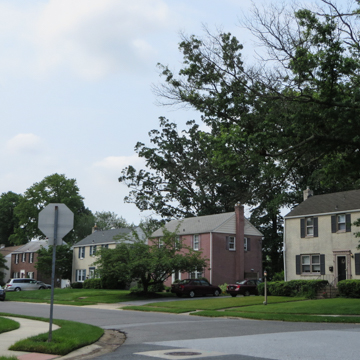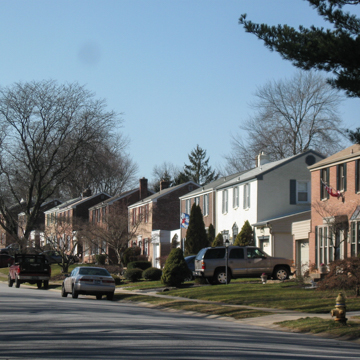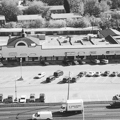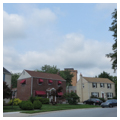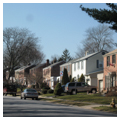The post–World War II pattern was followed again and again—a developer bought a site along a highway and erected signs in a farmer's field advertising a new shopping center, apartments, and homes. “This was a cow pasture out here,” Fairfax Shopping Center's current owner recalls. That center, opened in 1950, embodied the customary layout: a strip facility with a parking lot between it and the highway; little stores bracketed by a big anchor store at each end (including a supermarket). Developer Fred Vilone chose Colonial Revival style, complete with a cupola, but the place was twice remodeled after he sold it. Parking ultimately proved inadequate. Behind the shopping center is the residential part of the development; according to historian Carol Hoffecker (1983), “the builder kept his costs low by offering a minimum of variety in his two-story, six-room Colonial houses, which he sold for $15,000 apiece with little or no down payment and an FHA-backed mortgage.” Apartments stood as a buffer to the housing tract, all of which is boxy, reductivist red-brick-and-frame. Total housing units numbered 700. In 1951, Vilone's employees erected a granite stone to him by the highway: “One man's vision becomes security and happiness for thousands.”
You are here
Fairfax
If SAH Archipedia has been useful to you, please consider supporting it.
SAH Archipedia tells the story of the United States through its buildings, landscapes, and cities. This freely available resource empowers the public with authoritative knowledge that deepens their understanding and appreciation of the built environment. But the Society of Architectural Historians, which created SAH Archipedia with University of Virginia Press, needs your support to maintain the high-caliber research, writing, photography, cartography, editing, design, and programming that make SAH Archipedia a trusted online resource available to all who value the history of place, heritage tourism, and learning.









